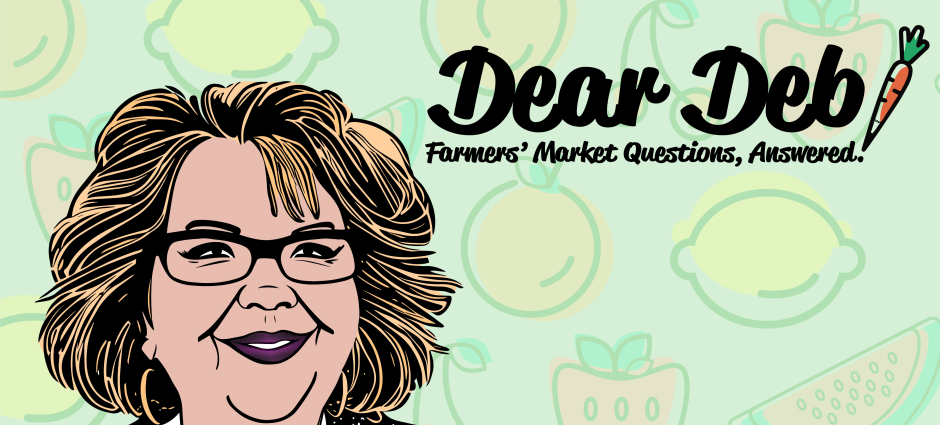Dear Deb - March 2023
Dear Deb: Where do the farmers get the produce they sell? Why don't I see bananas at the market? Why can’t I find figs at the market? Where are all the persimmons now?
Answer: Whew, this is quite an assortment of questions. I’ve put them together because they have an underlying theme of farmers’ market offerings changing throughout the year and knowing where the produce comes from.
Where do the farmers get the produce they sell?
PCFMA operates only certified farmers’ markets. Certified Farmers’ Markets are the only place, other than the farm itself, where California law allows farmers to sell their fruits and vegetables directly to consumers. In a certified farmers’ market, all produce and farm products are certified by local county Agricultural Commissioners and can only be sold by the California farms that grew them. So, yes, the farmers are offering only what they’ve harvested from their farms.
Why don't I see bananas at the market?
Believe it or not, this is one of the questions we get asked most often. That’s easy – bananas are very difficult to grow in California. Though many farmers have tried, they have discovered that our climate is just not suitable for growing tropical fruits. The bananas you see at the grocery store come from humid, southern climates and are often transported large distances to arrive on the shelves. California can be hot enough, but not nearly humid enough to produce these fruits which thrive in tropical climates. Since farmers can only bring to market what they grow, you won’t find bananas at California’s certified farmers’ markets anytime soon.
Why can’t I find figs at the market? Where are all the persimmons now?
Well, one reason is that the crop is not ready to harvest yet due to weather or a change in what the farmers grow. But the main reason is that produce grows with the seasons, and each fruit or vegetable has a different growing season. Ever since I began going to farmers’ markets many moons ago, my mantra was to try to “eat with the seasons” as much as I could. I’m not always successful because I like my tomatoes too much! But it’s the effort that counts, along with the understanding that your favorite fruits and vegetables may not be available all year- round. Farming practices are always evolving and changing, so some farmers might use greenhouses to grow, protect, and harvest crops like strawberries and tomatoes almost year-round. Not all produce can be grown this way.
Do you see tomatoes and grapes in the grocery store in mid-winter? Sure, you do. Those items come from countries in the southern hemisphere, like Chile and Australia that have seasons opposite to ours. Can’t find figs or persimmons in the farmers’ market in March? These fruits are harvested from late summer to fall but can be affected by serve weather, drought, and other climate or farming circumstances. Learning what produce is in season will help you plan ahead and get you eating with the seasons. Click here to see what’s currently in season.
The big question is, why should I eat with the seasons anyway? First, eating something that’s ripe, fresh, and just picked is a whole lot tastier than eating something that traveled across several countries and was most likely picked under-ripe! Don’t take my word for it – try biting into a big ripe peach or tomato that’s just been harvested.
A bonus to eating with the seasons is that it is less expensive overall – and with the cost of living increasing, we need all the help we can get! It’s cheaper to buy something that’s in season when quantities and varieties are readily available. An additional benefit to eating in season is that the produce is more nutritionally dense because it’s had time to ripen naturally. Eating with the seasons and eating foods from local farms is also better for the environment. Fruits and vegetables taste better when they don't need to catch a flight or cross the ocean to get on your plate!'
The bottom line is, eat with the seasons as much as you can. We’re not saying don’t have a tomato in March if you want one. Just remember it won’t taste as good as a tomato, fresh off the vine, in July. Buy from your local farmers’ market often and you will be rewarded with the best-tasting produce you’ve ever had while helping local farmers bring you the best of what they’ve grown. Happy munching!
Have a question you'd like to ask Deb? Send it to [email protected] and we'll try to answer it in the next post.

